Big Thanks
National Heritage Lottery
The Studland Seahorse Project has now been running since early 2008. The first year was funded by the National Lottery Your Heritage Fund. This funding enabled us to tag several seahorses and gain a great deal of knowledge about them. In this first season, we observed many seahorses becoming pregnant and giving birth multiple times. We have also learned that they form partnerships for at least one season and keep to the same territory for the breeding season.
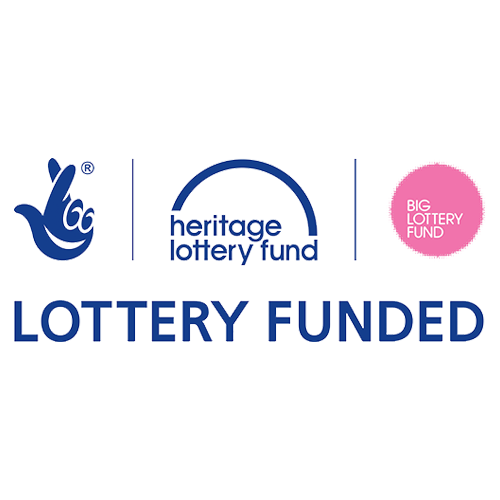
New Conservation Zone
PROTECTING THE SEAGRASS MEADOWS
Studland Bay is now a Marine Conservation Zone (MCZ) and we hope this recognition will ensure that the existing laws will be enforced to protect this rapidly disappearing habitat and the rare species, including the seahorses in it.
With our partners at Boatfolk, the Studland Bay Marine Partnership and others, we are starting to install Ecomoorings onto the site, 87 to date, to help protect the seagrass and the seahorses.
Visit Boatfolk’s Coastline Deadline page to learn about their environmental work.
Click on the logo below to go to their page.
Also check out about Ecomoorings on our Ecomooring page on this site
Studland Bay Marine Partnership
Following on from our success in gaining Marine Conservation Zone (MCZ) status for Studland Bay, we have now formed a partnership with other groups through the Studland Bay Marine Partnership to protect and enhance the bay.
Studland Bay Marine Partnership was formed with the aim of developing solutions that support sustainable recreation. The partnership is made up of key stakeholders from the boating community (Royal Yachting Association, RYA Liaison group, boatfolk), conservation charities (The Seahorse Trust), land managers (National Trust), researchers (University of Southampton), grassroots organisations (Oceans to Earth, Planet Purbeck) and Statutory bodies (Natural England, Marine Management Organisation).
The partnership has developed a 10-year strategy plan for the ecomoorings , seagrass restoration and study and management of the site for all. It is a conservation led partnership that will improve the habitat for species like Spiny seahorses into the future.
The mission of the partnership is to:
‘Manage Studland Bay in a collaborative and sustainable way, ensuring the Marine Conservation Zone (MCZ) objectives are met, nature can flourish, and people can enjoy the area without seriously impacting the environment. Ensuring recreational water users are a central part of this environmental initiative to restore seagrass meadows.’
Ecomoorings at Studland Bay in Dorset
The Seahorse Trust, working with its partners at Boatfolk and the Studland Bay Marine Partnership, have put in 87 Ecomoorings into Studland Bay, and this is just the start
In August 2021, The Seahorse Trust with its partners at BOATFOLK boating and marina services, installed 10 Ecomoorings as the start of an ambitious project to take pressure off this highly sensitive site, which is home to seagrass and seahorses.
Studland Bay was designated as a Marine Conservation Zone in 2019 after 11 years of studying, surveying and campaigning by The Seahorse Trust and its partners at Southampton University. The site is very important for its seagrass meadow and its population of Spiny Seahorses, both of which have been affected by an increase in the number of boats visiting the site.
These Ecomoorings will take the pressure off the site and allow it to recover to favourable conditions, which was the intention of the Marine Conservation Zone.
So how do they work ?
The Ecomoorings are very simple in design, as the image to the right shows.
There is a 2-metre helical screw that is sunk (screwed) into the seabed, attached to this is a 2 metre, elasticated riser, that goes up to the mooring buoy on the surface.
As the tide rises, the elasticated rode stretches; as it ebbs, the riser retracts. This way, the riser does not drag or run on the seabed, and so the seagrass does not get cut down or eroded away.
By having a very small footprint on the seabed (about 16 cm), it allows the seagrass to grow right up to it, giving a greater coverage of seagrass in the area, which increases the quality and area of seagrass for the diverse range of species, such as seahorses that live in it.
Our Partners
Without partners like BOATFOLK and the Studland Bay Marine Partnership, this project would not be possible. They have kindly funded this whole project, and working with them, we hope to go forward and install more.
We had one of the moorings kindly funded by ROCKFISH restaurants and one from a private individual, who did it in memory of a family member. Thank you to everyone, and if you want to help this project, please email us and let us know.
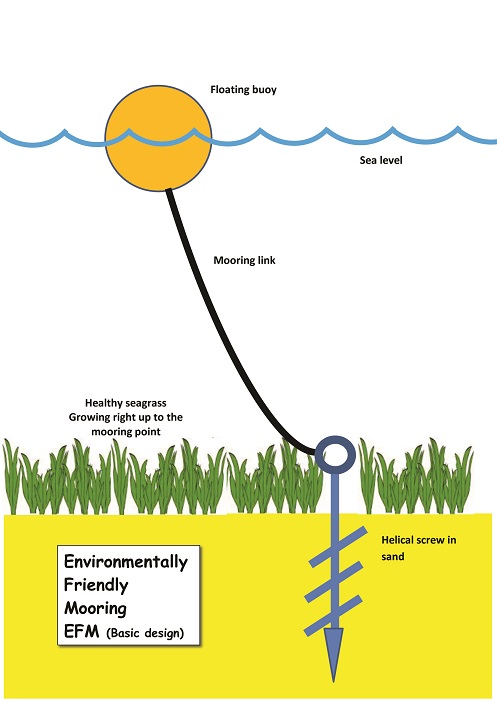
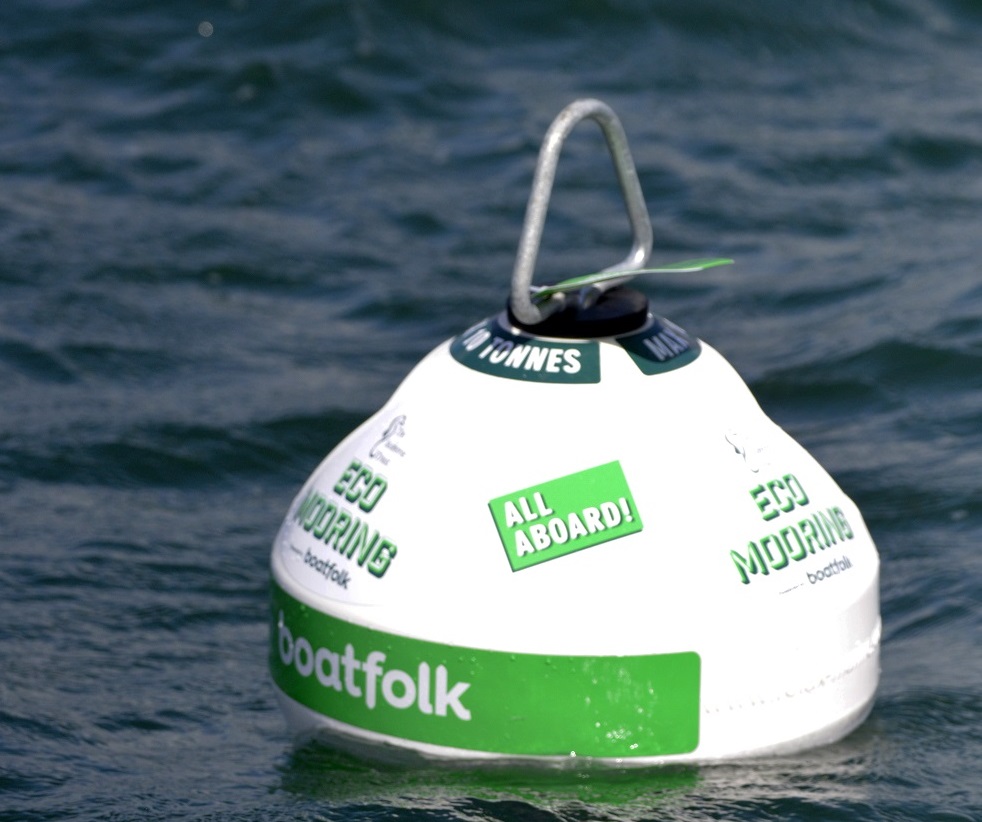
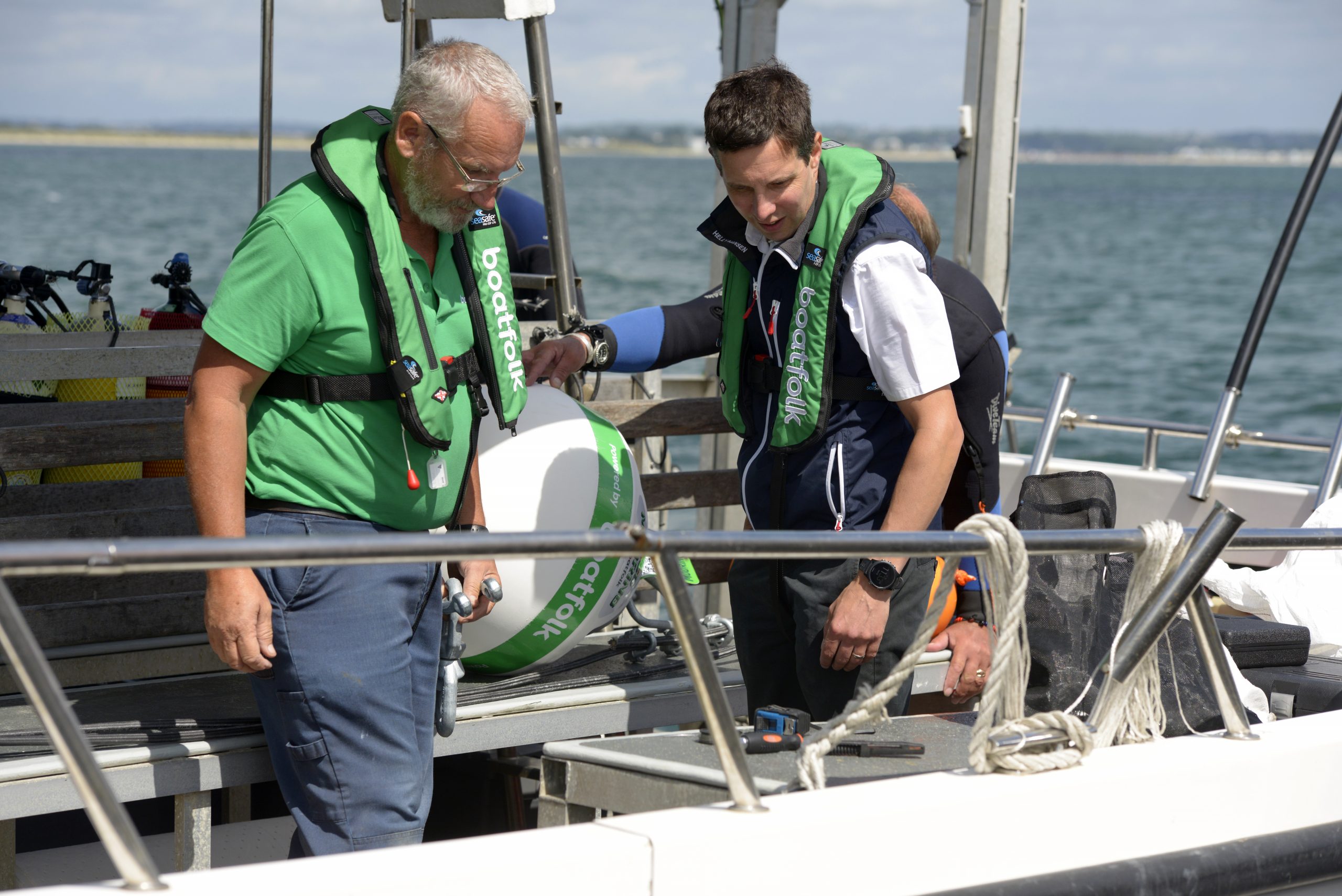
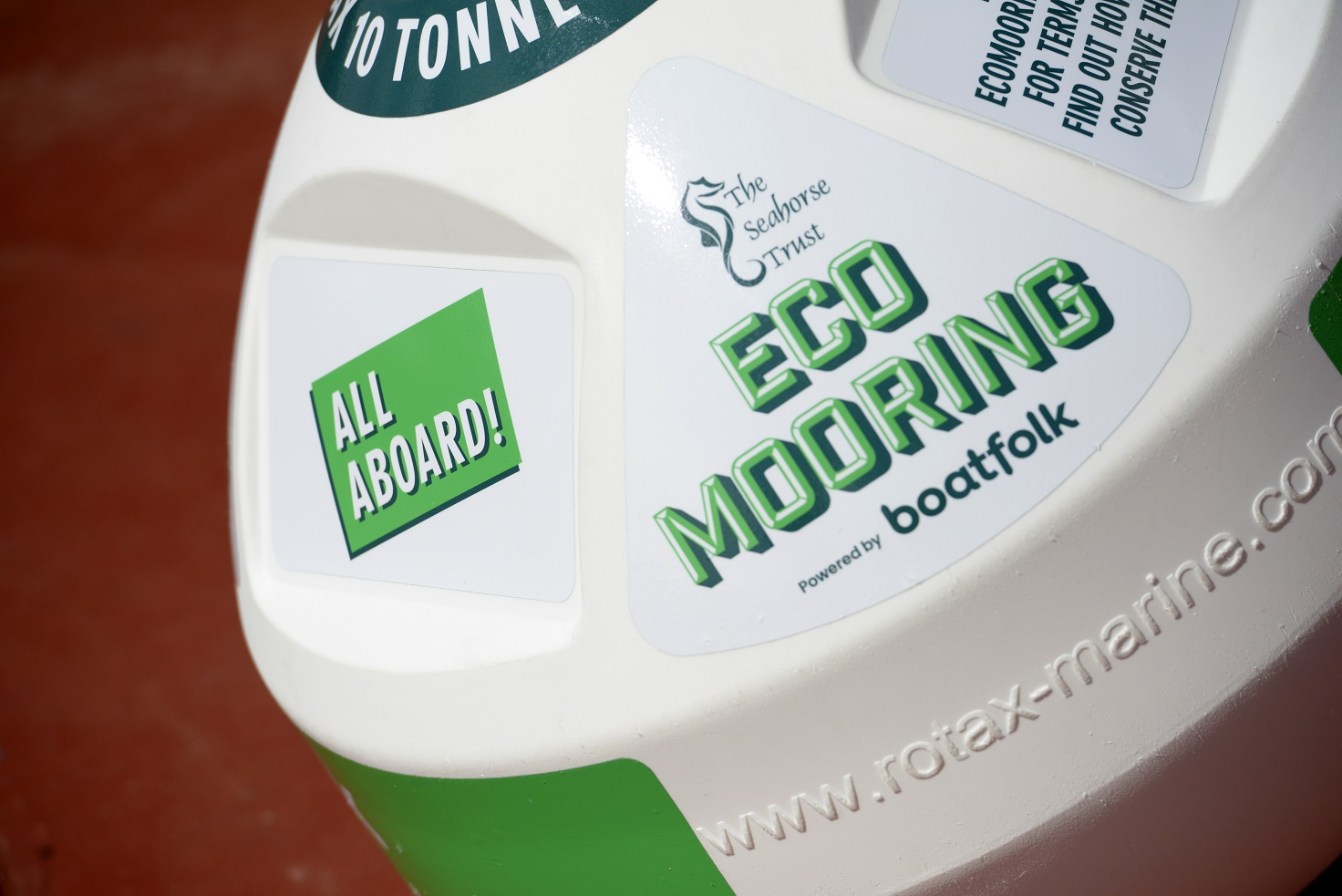
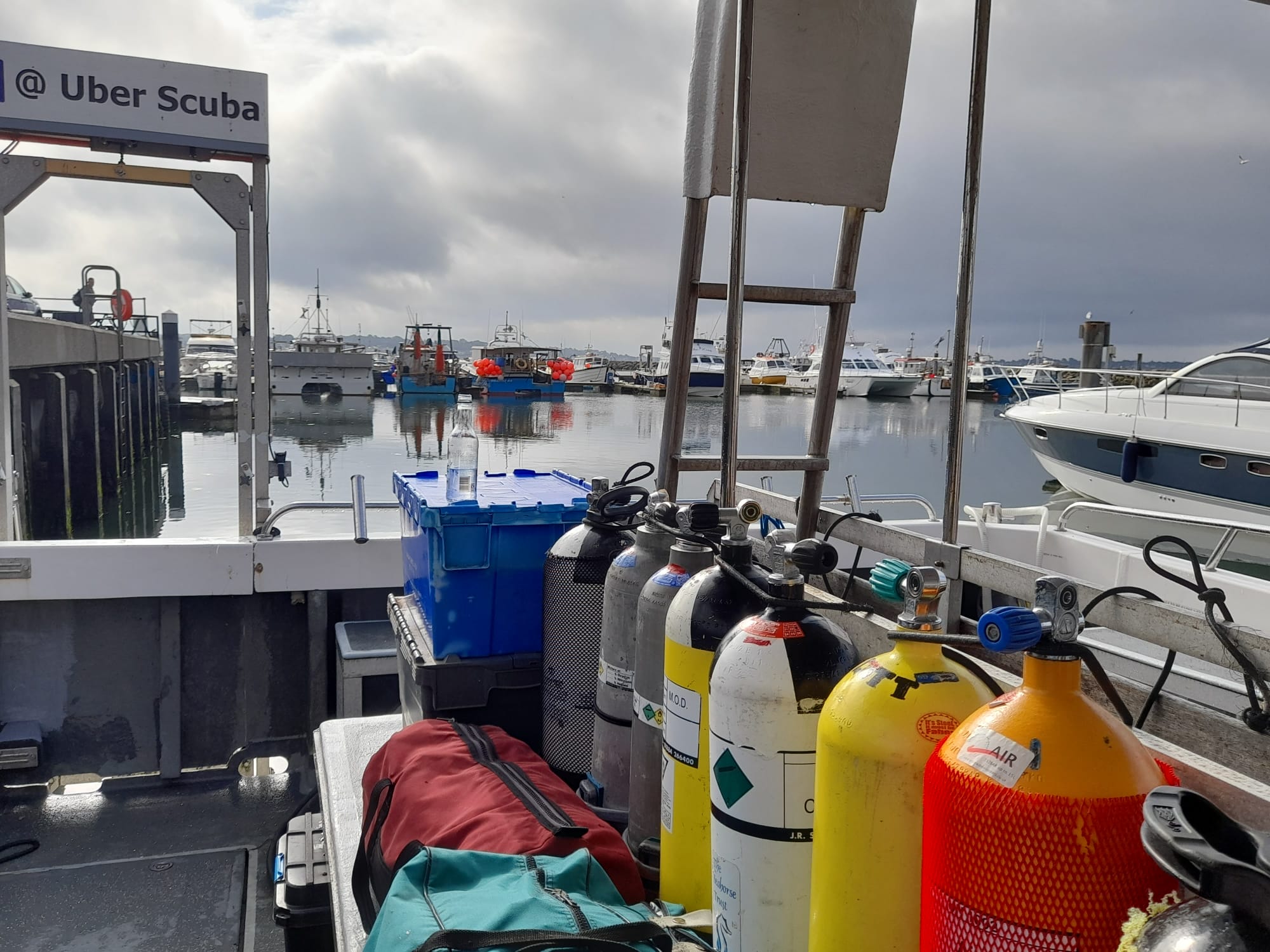
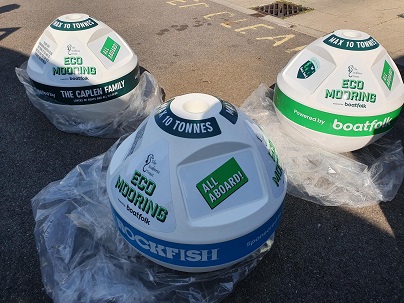
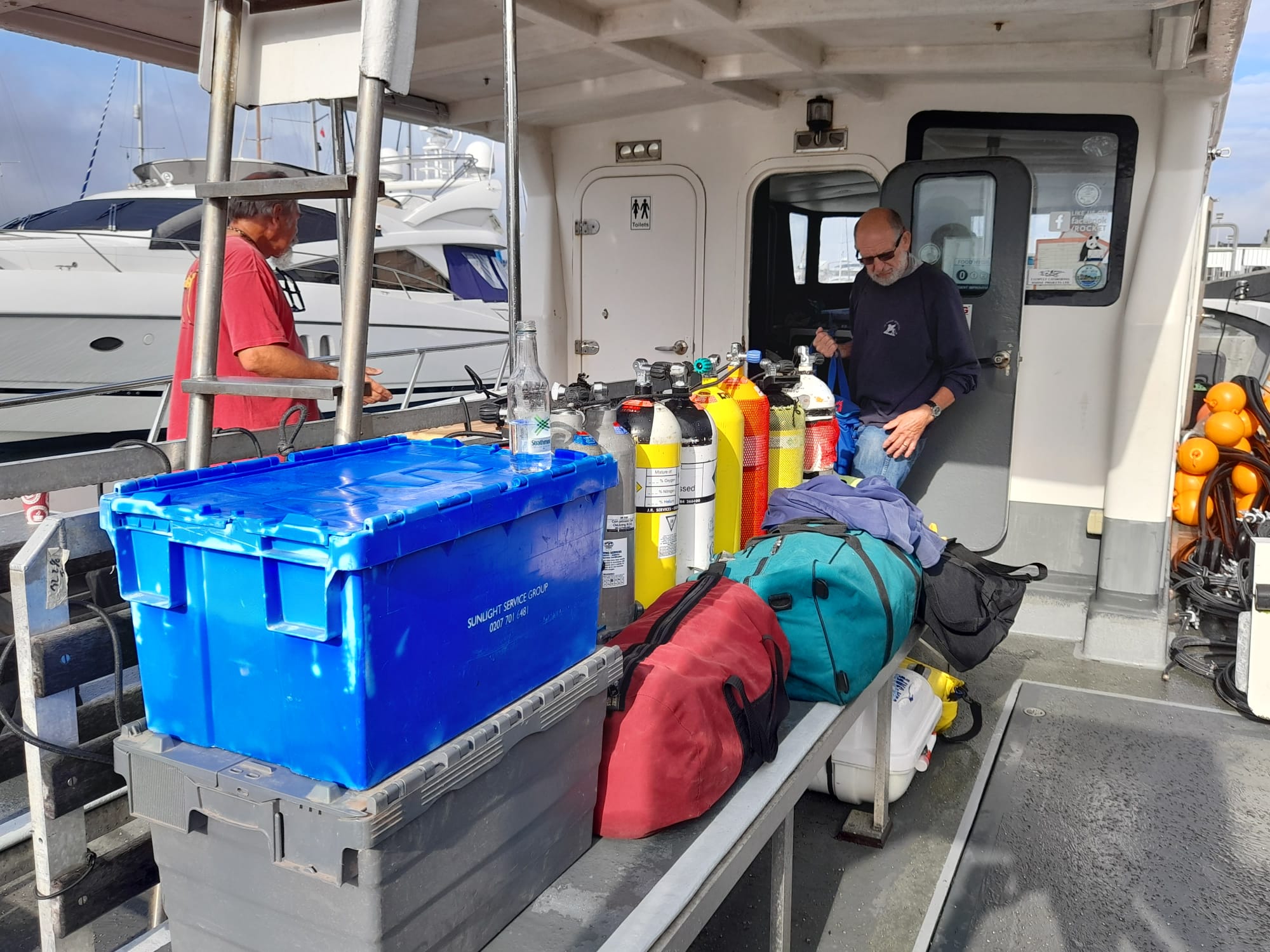
GoFundMe fundraiser to take the project to the next step
We have launched a £100,000 fundraising campaign with our partners to take this project to the next stage. We need to raise the money to set up the not-for-profit organisation, employ a person who can run the organisation and ensure the moorings are maintained, insured, and we have funds for more in the future. We also want to start buying and installing the next batch of moorings in Studland Bay and identify other sites and partners where we can install them.
Please help us by donating to this urgently needed project.
Click on the image to the left, and please donate today for a future ocean.
Living laboratory
Seagrass meadows are one of the world’s most threatened ecosystems and play an important role in supporting the ecosystems at the Purbeck beauty spot.
Scientists and engineers from Southampton University will conduct a series of surveys over the coming years using state-of-the-art monitoring technologies, such as camera-equipped robotic submersibles and autonomous boats, to map the seagrass and monitor their recovery from past anchor damage.
By building a comprehensive picture of the bay and its sub-tidal habitats, the scientists will be able to better advise on the implementation of nature-based solutions at Studland and identify safe, un-vegetated access routes for vessels.
Seagrass forms the habitats for a diverse range of sea life, including sea bass, sea bream and even the spiny seahorse, and may also play an important role in reducing the impact of erosion within the bay.
The seagrass reduces the energy of waves and tidal currents and traps nutrients and sand particles that would otherwise be washed away.
Even their roots help to bind sediment together, making it harder to erode.
All these effects contribute to improving the resilience of the sandy beaches of Studland Bay, which attracts more than 1.5 million visitors each year.
In addition to local benefits, seagrasses are also highly effective at capturing and storing carbon within the sediment.
Despite occupying less than 0.2% of the world’s seafloor, they account for 10% of all the carbon that gets buried in ocean sediments and are a major asset for mitigating climate change.
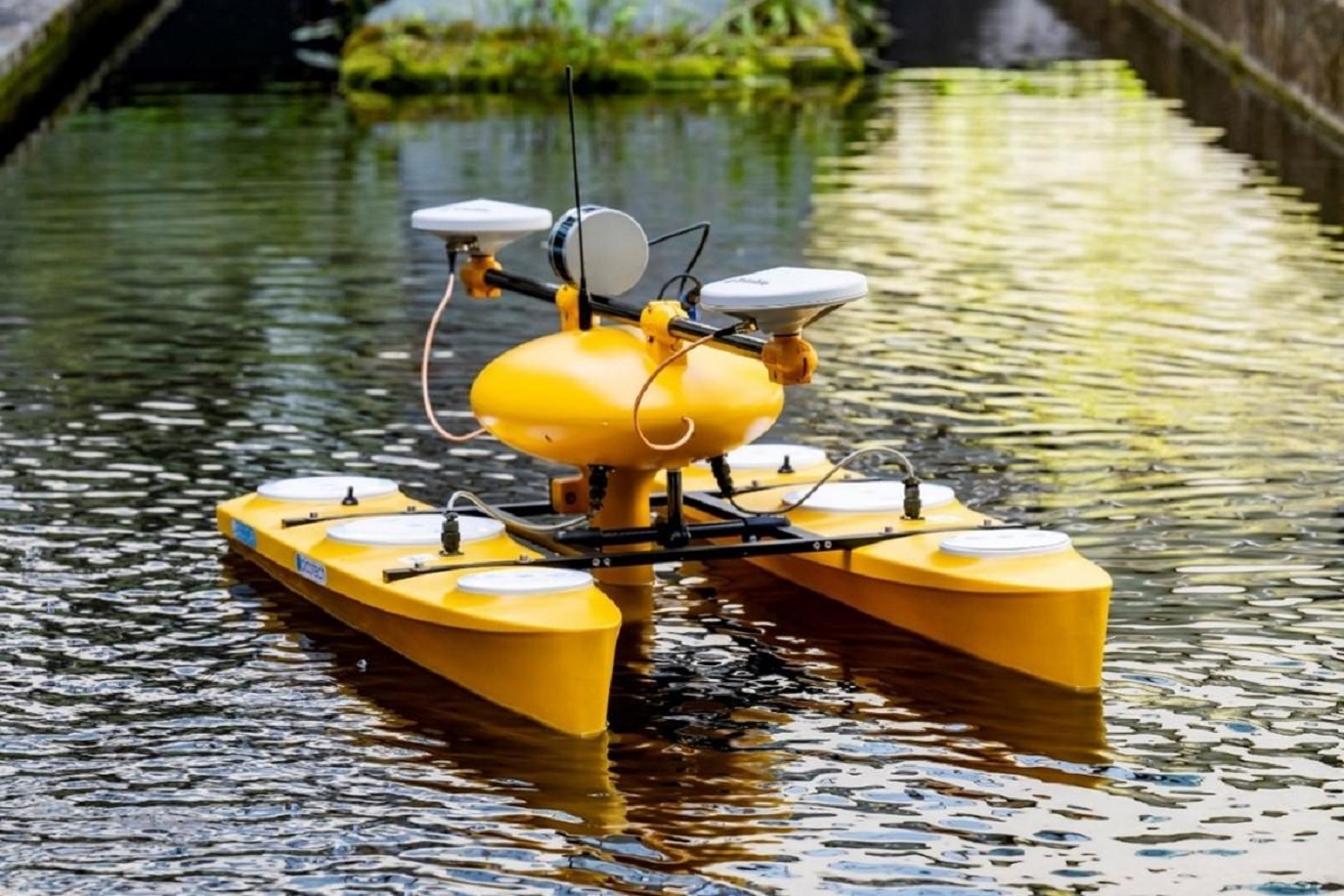

Identifying Seahorses
THROUGH THE NEW TECHNIQUE OF PHOTO IDENTIFICATION

After a number of years working at Studland, we have now changed our method of identifying seahorses from the original tags to photo identification. This means that we can identify individuals on the study site. This allows us to build up an intimate picture of each seahorse and its ecology. By taking high-resolution pictures, strictly without flash as it can kill seahorses, we use a system of spot clusters to identify the seahorses. Although the tagging was not intrusive, we wanted to minimise any contact with the seahorses if we could, and so this method has been used since late 2013. The project is proposed to go on for a number of years so that we can gather a great deal of information about these amazing animals, particularly as their habitat is under threat from overuse. We hope that the data we collate will allow us to put together a management plan for the site so that there will be seahorses there for generations to come.


